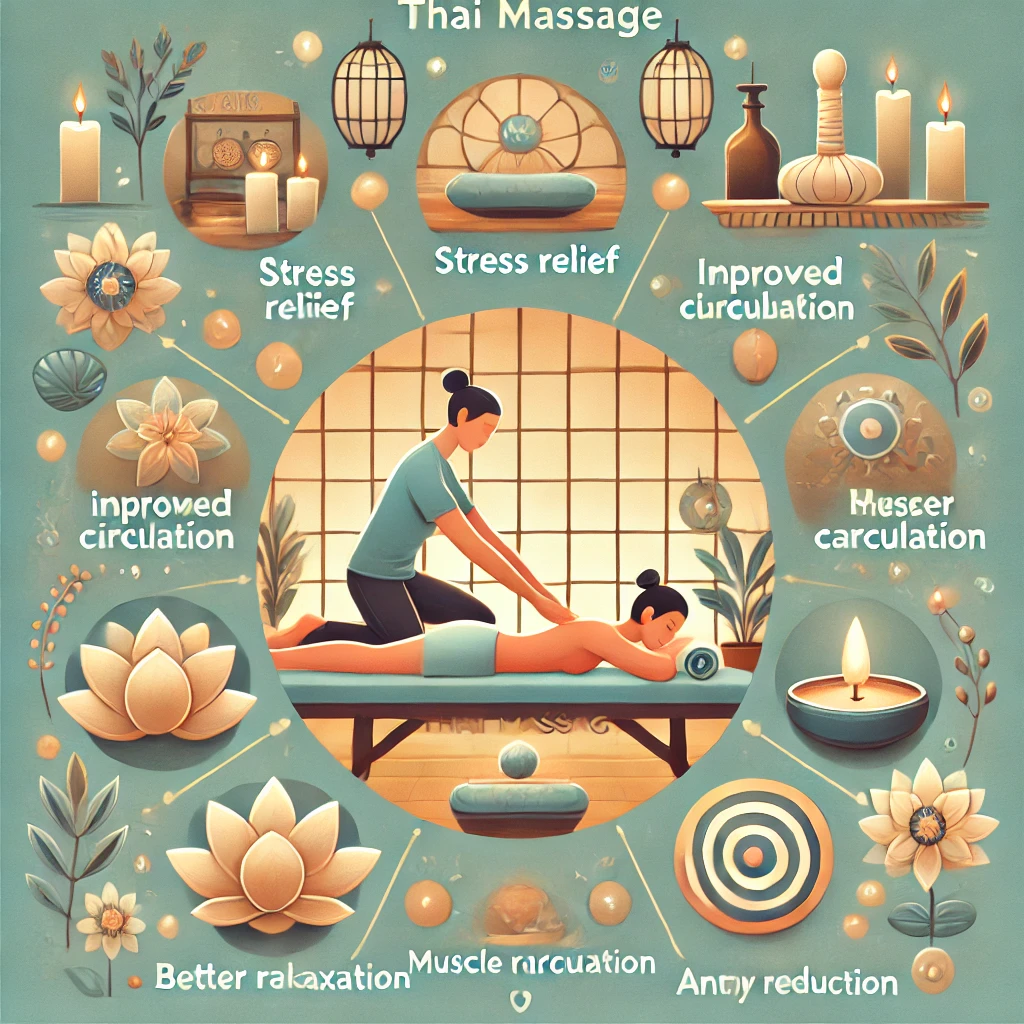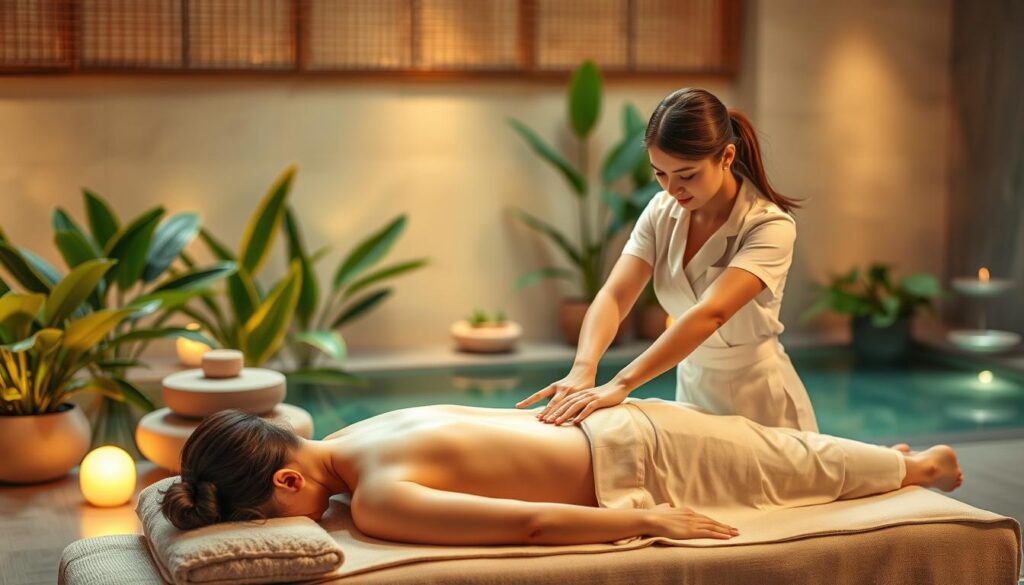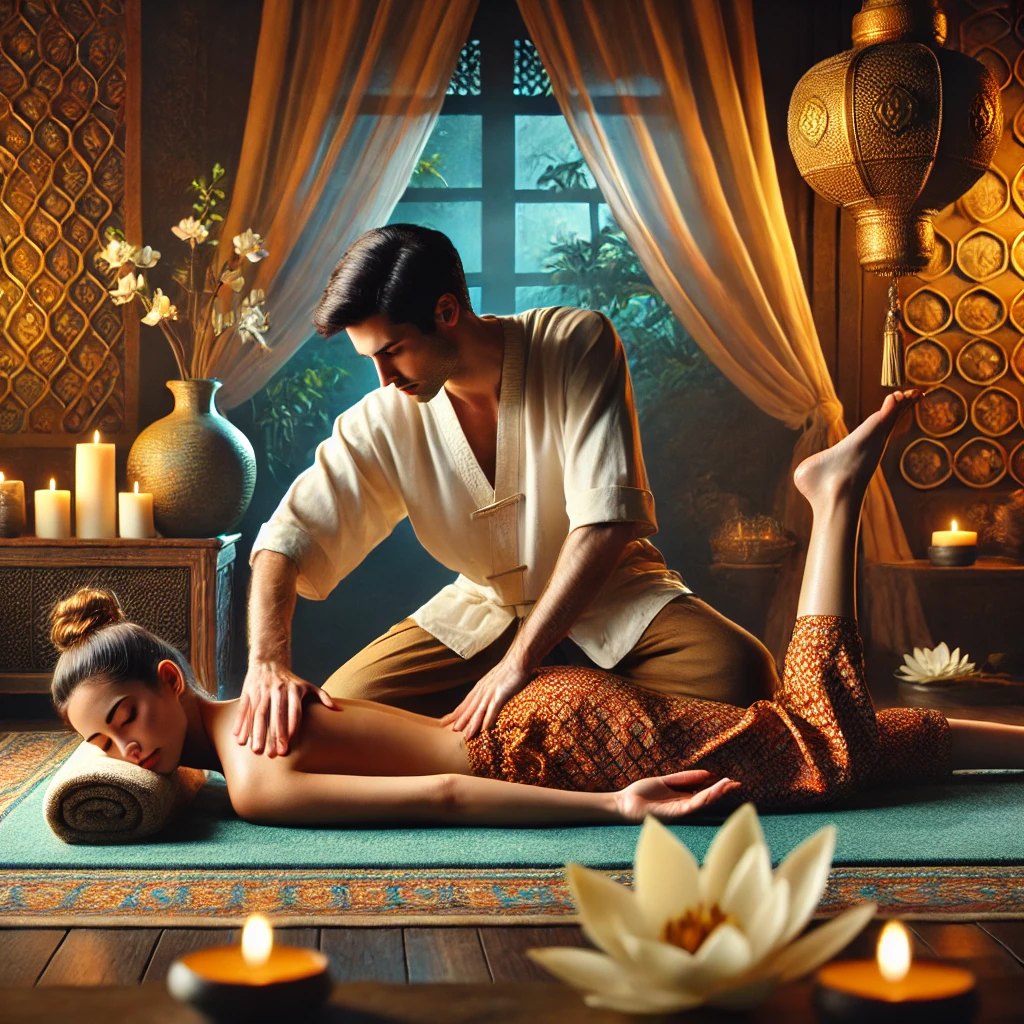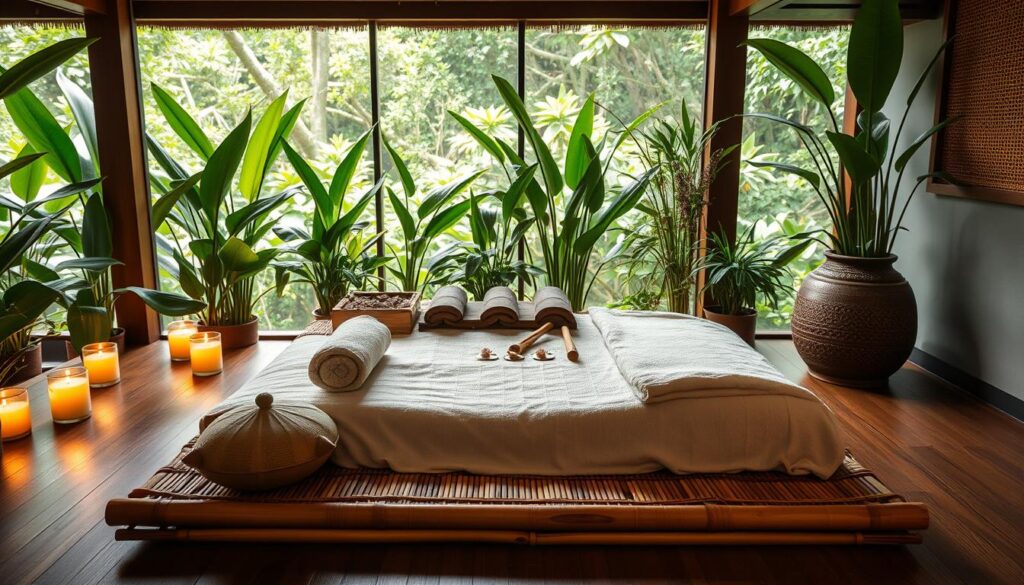
TEXT US

TEXT US
perththaimassage
November 13, 2024




Do not hesitate to contact us. Your enquiries is most welcome.

If you’ve never experienced a Thai massage, you may be curious about how it can significantly improve your mental well-being. At Perth Thai Massage, we specialise in authentic techniques that provide powerful relief from stress and anxiety, two of the most common health challenges facing people today. In this article, we’ll explore how Thai massage can truly be a game-changer for your mental health and overall quality of life.
Before diving into the benefits of Thai massage, it’s important to understand how stress and anxiety affect the body. When you’re under stress, your body releases hormones like cortisol and adrenaline. While these hormones are essential for short-term survival, prolonged exposure can lead to a host of physical symptoms, including muscle tension, headaches, digestive issues, and even heart problems. According to the Australian Institute of Health and Welfare, around 3.2 million Australians suffer from an anxiety-related condition each year. Chronic stress is a silent killer, contributing to serious long-term health problems.
Unlike traditional Western massage techniques, Thai massage is a holistic approach that combines acupressure, deep stretching, and assisted yoga postures. This combination aims to balance the body’s energy flow, known as “Sen” lines, similar to meridians in Chinese medicine. By doing so, Thai massage not only soothes aching muscles but also promotes emotional and spiritual well-being.
One of the most noticeable benefits of Thai massage is its effectiveness in reducing muscle tension and pain. When you experience chronic stress, your muscles often become tight and sore. Thai massage addresses these issues through rhythmic pressure and extensive stretching techniques. A study published in the Journal of Bodywork and Movement Therapies found that Thai massage significantly reduced muscle tension and provided long-lasting relief from pain.
The passive stretching involved in Thai massage is particularly beneficial. Our therapists use their hands, feet, knees, and elbows to apply pressure and assist you in deep stretches. While this might feel different from a traditional massage, it helps release muscle knots and enhances flexibility. For those new to Thai massage, the experience may feel unusual at first, but it quickly leads to a profound sense of physical and mental relaxation.
Thai massage is also known for its calming effect on the nervous system. The gentle, rhythmic movements of the massage activate the parasympathetic nervous system, which is responsible for rest and digestion. Essentially, this helps your body shift from a high-stress “fight or flight” mode to a more relaxed state.
Research from the International Journal of Stress Management has shown that individuals who receive regular Thai massages experience up to a 40% reduction in anxiety symptoms. This decrease is linked to lower cortisol levels and a boost in serotonin and dopamine—your body’s natural “feel-good” hormones.
If you struggle with sleep due to stress or anxiety, Thai massage can make a significant difference. The deep relaxation induced by the massage often leads to better sleep quality. According to the Sleep Health Foundation, approximately 60% of Australians experience sleep difficulties at least once a week, and stress is a major contributing factor. Thai massage helps break this cycle by relaxing your muscles and calming your mind, setting the stage for a good night’s sleep.
Improved sleep, in turn, can reduce overall stress levels, creating a positive feedback loop for better health. The benefits are long-lasting, making Thai massage a worthwhile investment in your well-being.
Thai massage is more than just a physical treatment; it also offers an experience of mindfulness. As you lie on the massage mat, you’re encouraged to focus on your breathing and the movements of your body. This awareness creates a meditative state, which enhances the massage’s therapeutic effects. Many first-time clients report feeling a heightened sense of mental clarity and emotional balance after their session.
Mindfulness is increasingly recognised as an effective way to manage anxiety. Beyond Blue, an Australian mental health organisation, reports that mindfulness practices can reduce symptoms of anxiety by up to 30%. A Thai massage session offers a hands-on way to incorporate mindfulness into your life, naturally and effortlessly.
If you’ve never had a Thai massage before, rest assured that it’s a gentle yet highly effective experience. While Thai massage is more interactive than other forms of massage, our therapists at Perth Thai Massage tailor each session to your comfort level. We ensure that even beginners feel comfortable while gaining all the benefits of this ancient healing practice.
The benefits of Thai massage extend beyond just feeling good in the moment. They have real-world implications that can improve your quality of life. For instance, reducing muscle tension can make everyday activities more comfortable, from sitting at a desk to exercising. Alleviating stress and anxiety can lead to better relationships and improved work performance. In essence, a Thai massage can be the key to unlocking a more balanced and fulfilling life.
See our prices at Perth Thai Massage, we’re committed to providing an authentic and calming experience. Our highly trained therapists have a deep understanding of how to alleviate stress and anxiety using traditional Thai techniques. We ensure that every session is tailored to your needs, whether you’re a first-timer or a seasoned massage enthusiast.
If you’re looking for a natural, effective way to relieve stress and anxiety, Thai massage may be just what you need. Book your appointment today with Perth Thai Massage and experience the transformative power of this ancient practice. Don’t miss our next article, where we’ll discuss how Thai massage can improve flexibility and boost athletic performance.
Thai massage, also known as Thai yoga massage, is deeply rooted in ancient Thai healing traditions and influenced by Ayurvedic medicine and yoga practices. Developed by Buddhist monks as a form of healing therapy. Thai massage aims to promote physical, mental, and spiritual well-being by balancing the body’s energy flow. Therfore, releasing blockages along energy pathways known as “sen.”
The hallmark of Thai massage lies in its unique combination. Of assisted stretching, rhythmic compression, and acupressure techniques. During a Thai massage session, the therapist uses their hands, elbows, knees, and feet. To apply pressure to specific points on the body. While also guiding the recipient through a series of gentle stretching movements reminiscent of yoga postures. This dynamic approach helps to improve flexibility, release tension. This is to restore harmony to the body, mind, and spirit.
The origins of Thai massage The origins of Thai massage can be traced back to ancient Thailand. Where it was developed by Buddhist monks as a therapeutic healing method. Drawing inspiration from Indian Ayurvedic medicine and traditional Chinese medicine. Thai massage incorporates elements of yoga, meditation, and energy work to promote overall wellness.
Thai massage offers numerous benefits, including alleviating muscular pain, improving flexibility, and enhancing circulation. It also promotes mental clarity, emotional balance, and spiritual awareness. Making it a holistic therapy for total wellness.

Regular massage employs a variety of techniques, including effleurage (long, gliding strokes), petrissage (kneading and squeezing motions), and friction (circular movements with pressure), among others. These techniques are designed to manipulate the soft tissues of the body. Including muscles, tendons, and ligaments, to promote relaxation, improve circulation, and alleviate pain.
Normal massage as above employs various techniques, including effleurage (long, gliding strokes), petrissage (kneading and squeezing motions), and friction (circular movements with pressure). These techniques manipulate the soft tissues of the body, including muscles, tendons, and ligaments, to promote relaxation, improve circulation, and alleviate pain.
The origins of normal massage can be traced back to Per Henrik Ling. A Swedish physician who developed a system of therapeutic massage known as Swedish massage. Drawing on techniques from Chinese, Egyptian, Greek, and Roman traditions. Ling created a comprehensive approach to massage therapy that focused on restoring balance and harmony to the body.
Normal massage provides a wide range of benefits. Including reducing muscle tension, promoting relaxation, improving circulation, and enhancing flexibility. It has also been shown to reduce stress, alleviate anxiety and depression, and relieve chronic pain conditions such as arthritis and fibromyalgia.
Both Thai massage and normal massage offer therapeutic benefits for individuals from all walks of life. For those in physically demanding professions, such as bricklayers. Both types of massage can provide relief from muscular tension, stiffness, and fatigue. The stretching techniques and acupressure points targeted in Thai massage. Can help alleviate muscle strain, improve flexibility, and enhance overall mobility. Similarly, the kneading and stroking techniques used in normal massage. Can soothe tired muscles, reduce inflammation, and alleviate discomfort from repetitive strain injuries.
Both Thai massage and normal massage offer unique approaches to healing and well-being. Each with its own set of techniques, origins, and benefits. Whether you’re drawn to the dynamic stretching movements of Thai massage or the soothing strokes of normal massage. There’s a massage therapy style to suit every preference and need. By exploring the diverse world of massage therapy, you can discover new pathways to relaxation, rejuvenation, and vitality for the body, mind, and spirit.
See our articles on the complete benefits of Thai massage & Thai massage prices
Thai massage involves a combination of assisted stretching, rhythmic compression, and acupressure techniques, while regular massage typically focuses on kneading, stroking, and rubbing of the muscles using various techniques such as effleurage and petrissage. Additionally, Thai massage is rooted in ancient Thai healing traditions and emphasizes balancing the body’s energy flow, whereas regular massage has its origins in Western medical practices and aims to promote relaxation and reduce muscle tension.
Both Thai massage and regular massage can be effective for relieving muscular tension and stiffness, but they approach this goal in different ways. Thai massage uses stretching and acupressure techniques to release tension and improve flexibility, while regular massage employs kneading and stroking motions to relax the muscles and improve circulation. The choice between the two depends on individual preferences and needs.
Thai massage is often favored by athletes and physically active individuals for its emphasis on flexibility and mobility. The assisted stretching techniques used in Thai massage can help to improve range of motion, reduce the risk of injury, and enhance athletic performance. However, regular massage can also be beneficial for athletes, as it helps to alleviate muscle soreness, promote recovery, and prevent overuse injuries.
Both Thai massage and regular massage can promote stress relief and relaxation, but they offer different approaches to achieving these goals. Thai massage combines physical manipulation with mindfulness practices to induce deep relaxation and reduce stress levels. Regular massage, on the other hand, focuses on soothing the muscles and calming the nervous system through gentle, rhythmic strokes. Ultimately, the choice between the two depends on individual preferences and the desired outcome.
While both Thai massage and regular massage are generally safe for most people, there are certain contraindications and health considerations to keep in mind. Thai massage involves stretching and pressure techniques that may not be suitable for individuals with certain medical conditions, such as osteoporosis, herniated discs, or recent injuries. Regular massage, on the other hand, may not be recommended for individuals with skin conditions, open wounds, or certain medical conditions that affect circulation. It’s important to consult with a qualified healthcare professional before undergoing any type of massage therapy, especially if you have underlying health concerns.